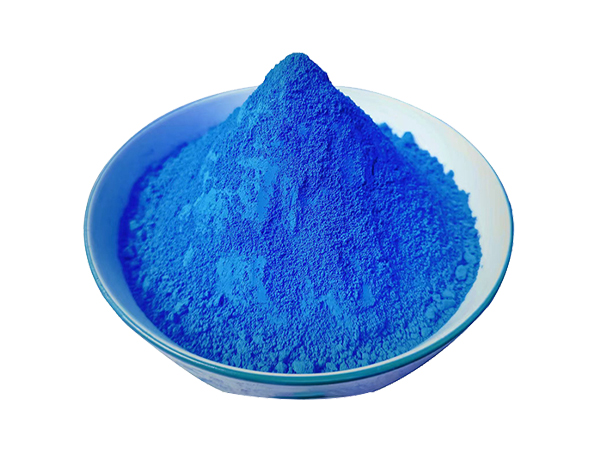When dyeing with ultramarine dye, it is easy to encounter problems such as uneven dyeing, recrystallization, agglomeration, and agglomeration. How to prevent them is as follows:
1. Uneven staining:
The uniformity of absorbing ultramarine dye is related to the ratio between the dye flow rate and absorbance. During the color absorption stage, change the direction of the liquid flow every 8 cycles. Reducing the bath ratio from 1:12 to 1:6 can change the uniformity of the swimming stage, although the unevenness of staining at the beginning is more obvious. When mixing and dyeing, simply selecting dyes with similar diffusion properties is not enough to achieve uniform dyeing
At this point, mixing plays a more important role. It is correct to use dyes with the same diffusion performance when using the same amount of three dyes for color matching. But if the proportion of two dyes used is relatively large, the diffusion of the third dye should be lower, otherwise it will absorb faster than the other two dyes, which can easily cause uneven dyeing
2. Recrystallization:
Dispersed dyes often undergo repeated heating and cooling, resulting in recrystallized particles larger than 1nm. Adding additional dispersants can reduce recrystallization to a low level. When the dyeing bath is cooled from 130 ℃ to 90 ℃ during dyeing, some dyes are prone to recrystallization, resulting in poor friction fastness of the dye and even clogging of the filter in the high-temperature and high-pressure dyeing machine
Preventive measures include:
① Keeping the temperature at 100 ℃ for a long time makes the dye prone to agglomeration. Adjust the heating rate from 100 ℃ to 130 ℃
② If the dye undergoes recrystallization in the dye bath after reaching dyeing equilibrium, add more dispersant
③ Some onion quinone type red dispersed dyes, such as C I. Dispersed Red 53, 60, 92, 121, 132, 159, etc. are prone to recrystallization even when their concentrations are significantly lower than saturation levels towards the end of dyeing, especially when dyeing darker colors. Especially when dyeing with hard water, it is easy to chelate with metal ions. The chelates produced have poor solubility under dyeing conditions, leaving blue spots or stripes on the fabric
Other factors that can cause recrystallization include:
Additives, winding oil, alkaline residues, etc. added during spinning. Refining before dyeing or adding chelating agents in the dyeing bath can effectively avoid these problems. Once color spots occur, they can be eliminated by alkaline reduction cleaning or acid treatment
3. Agglomeration and focusing:
The contributing factors include: weakening the dissolution effect of dispersants, reducing electrostatic repulsion, and increasing the collision rate and kinetic energy of dye particles. Generally, the higher the staining concentration and temperature, and the longer the staining time, the greater the possibility of agglomeration and focusing. Dyeing aids such as carriers and leveling agents are easy to replace and blend with dispersants in dyes, thereby reducing dispersion stability

Measures to improve stability during dyeing include:
① Disperse the dye at 40 ℃ and use a concentrated dispersion
② Control the temperature well when heating the dye solution
③ Using dispersants with protective colloidal properties
④ No need for additives with cloud points at high temperatures
⑤ Wash away all dyes and yarn auxiliaries, including emulsifiers, before dyeing
⑥ During high-temperature dyeing, carriers and non-ionic leveling agents should not be added before most dyes have been dyed onto the fabric
⑦ No salts are used, only acetic acid is used to adjust the pH value
⑧ Yarn or dyed fabrics should be appropriately shaped and undergo laboratory tests to ensure the dispersion stability of dispersed dyes

Mobile Site

Mobile Site
Mr. Ma +86 137-2817-9886
Address: No. 26, Qishi Section, Eastern Expressway, Qishi Town, Dongguan City, Guangdong Province, China
Copyright © 2025 Dongguan Haideli New Materials Co., Ltd. All rights reserved
【Backstage】